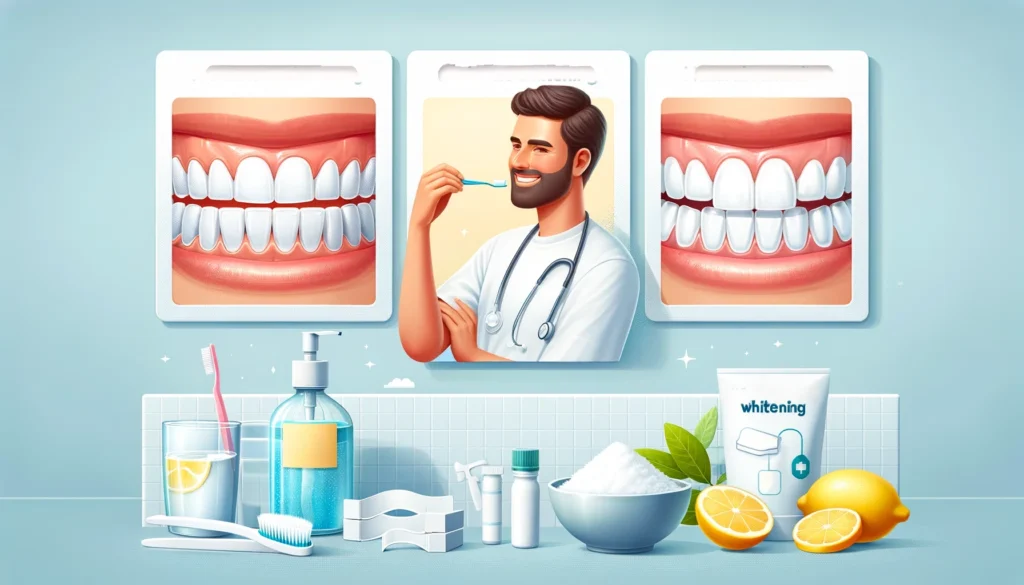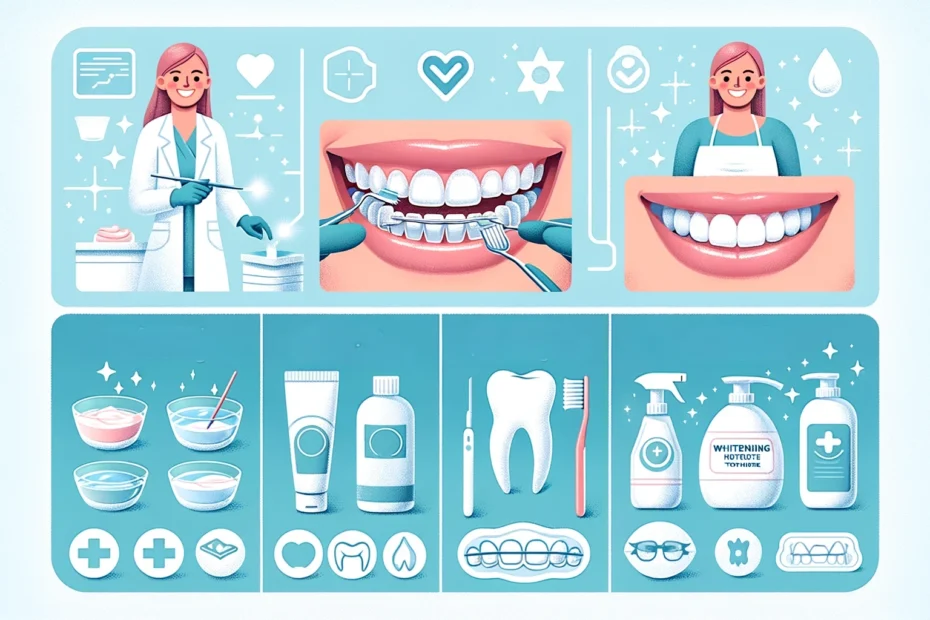Teeth whitening has become a popular cosmetic procedure, promising a brighter, more attractive smile. The demand for a dazzling smile has led to the development of various whitening techniques. Each method has advantages and disadvantages, making it essential to understand them before choosing. This article explores different teeth whitening methods, helping you make an informed decision.
Professional In-Office Whitening
Professional in-office whitening is often considered the gold standard in teeth whitening. Dental professionals perform this method using high-concentration bleaching agents to deliver rapid and noticeable results.
This treatment typically involves applying a protective gel to the gums and then using a bleaching agent on the teeth, sometimes activated with a special light or laser. The entire process usually takes about an hour, and patients often see their teeth whitened by several shades in just one session. This makes it an ideal option for those seeking quick, dramatic results for a brighter, more confident smile.
| Aspect | Pros | Cons |
| Efficacy | Highly effective, significant whitening in a single session | |
| Speed | Immediate results, ideal for quick fixes | Time-consuming appointments |
| Safety | Supervised by a dentist, minimizing risk | |
| Cost | Expensive, several hundred dollars | |
| Sensitivity | High concentrations of bleaching agents can cause sensitivity. |
At-Home Whitening Kits
At-home whitening kits are a popular alternative. These kits offer the convenience of whitening teeth in the comfort of your own home. These kits typically include custom or semi-custom trays and a lower-concentration bleaching gel.
Users wear the trays for a specified period each day, often for a couple of weeks. This gradual process allows for more control over the whitening intensity and reduces the likelihood of sensitivity. Additionally, the convenience of at-home treatment means you can easily incorporate it into your daily routine, making it an attractive option for busy individuals seeking a brighter smile.
| Aspect | Pros | Cons |
| Convenience | Perform treatment at your own pace | Results take longer compared to professional treatments |
| Cost | More affordable than in-office treatments | |
| Customization | Custom trays ensure better contact, uniform whitening | |
| Efficacy | Without supervision, risk of uneven whitening | |
| Sensitivity | Prolonged use can lead to sensitivity |
Whitening Toothpaste and Mouthwashes
Whitening toothpaste and mouthwashes are among the most accessible and affordable teeth whitening options. These products contain mild abrasives and small amounts of bleaching agents.

Regular use can help remove surface stains caused by coffee, tea, and smoking, thereby enhancing the overall appearance of your teeth. While they are not as potent as professional treatments, they are ideal for maintaining the results of more intensive whitening procedures. Their ease of use and availability make them a convenient choice for anyone looking to improve their smile without a significant investment gradually.
| Aspect | Pros | Cons |
| Accessibility | Easily available over the counter, very affordable | Provides only mild whitening effects |
| Ease of Use | Simple to incorporate into daily routine | Noticeable results take weeks to months |
| Maintenance | Effective in maintaining results of more intensive treatments | Some can be abrasive, leading to enamel erosion |
Natural Whitening Methods
Natural whitening methods, such as baking soda, hydrogen peroxide rinses, and fruit peels, are often touted for their safety and low cost. Baking soda acts as a mild abrasive that can help scrub away surface stains, while hydrogen peroxide is a bleaching agent that can penetrate the enamel to lift deeper stains.
Fruit peels, such as those from bananas or oranges, contain compounds that may help whiten. These methods appeal to those who prefer a more holistic approach to oral care. However, consistent use and patience are required to see noticeable results.
| Aspect | Pros | Cons |
| Cost | Inexpensive, readily available ingredients | Generally, mild whitening effects |
| Safety | Perceived as gentler on teeth and gums | Incorrect usage can lead to enamel damage or gum irritation |
| Control | Complete control over ingredients and application | Limited scientific evidence supporting effectiveness |
Laser Teeth Whitening
Laser teeth whitening is a high-tech procedure that uses laser light to enhance the effects of the bleaching agent applied to the teeth. During the treatment, a bleaching gel is applied to the teeth, and a laser is used to activate the gel, speeding up the whitening process.
This method can significantly lighten teeth in just one session, making it ideal for those seeking immediate results. Although more expensive, the precision and effectiveness of laser whitening make it a preferred choice for individuals looking for a high-impact solution to discoloration, ensuring a radiant and confident smile.
| Aspect | Pros | Cons |
| Speed | Rapid results, often within an hour | Expensive, one of the most costly options |
| Effectiveness | More significant whitening compared to other methods | Can cause significant tooth sensitivity |
| Precision | Targeted treatment, minimizing exposure to sensitive areas | Not all dental offices offer this service |
Side Effects and Risks
While generally safe, teeth whitening can have side effects and risks that vary depending on the method used.
- Tooth Sensitivity: Many whitening methods can cause increased sensitivity to temperature and touch.
- Gum Irritation: Bleaching agents can irritate the gums if they come into contact with the soft tissue.
- Enamel Damage: Overuse of abrasive whitening products can lead to enamel erosion.
- Uneven Results: Without professional guidance, achieving uniform whitening can be challenging.
Comparing Costs and Results
When choosing a teeth whitening method, it’s important to weigh the costs against the expected results.
| Whitening Method | Cost | Results |
| Professional In-Office | High | Immediate and significant |
| At-Home Whitening Kits | Moderate | Gradual and satisfactory |
| Whitening Toothpaste/Mouthwash | Low | Minimal |
| Natural Methods | Very Low | Mild |
| Laser Whitening | Very High | Immediate and significant |
Conclusion:
Choosing the right teeth whitening method depends on your specific needs, budget, and desired level of whitening. Professional in-office and laser treatments offer quick and dramatic results at a higher cost. At-home kits provide a balance of effectiveness and affordability. Whitening toothpaste, mouthwashes, and natural methods are best suited for maintenance and minor whitening. Understanding the pros and cons of each method will help you achieve the bright smile you desire while minimizing risks and costs.

Dr. Orion Johnson is a dedicated and compassionate dentist committed to providing exceptional dental care to his patients.Dr. Johnson obtained his Doctor of Dental Surgery (DDS) degree from a prestigious dental school, where he excelled academically and clinically. He is licensed to practice dentistry and stays updated with the technology through continuing education and training.
